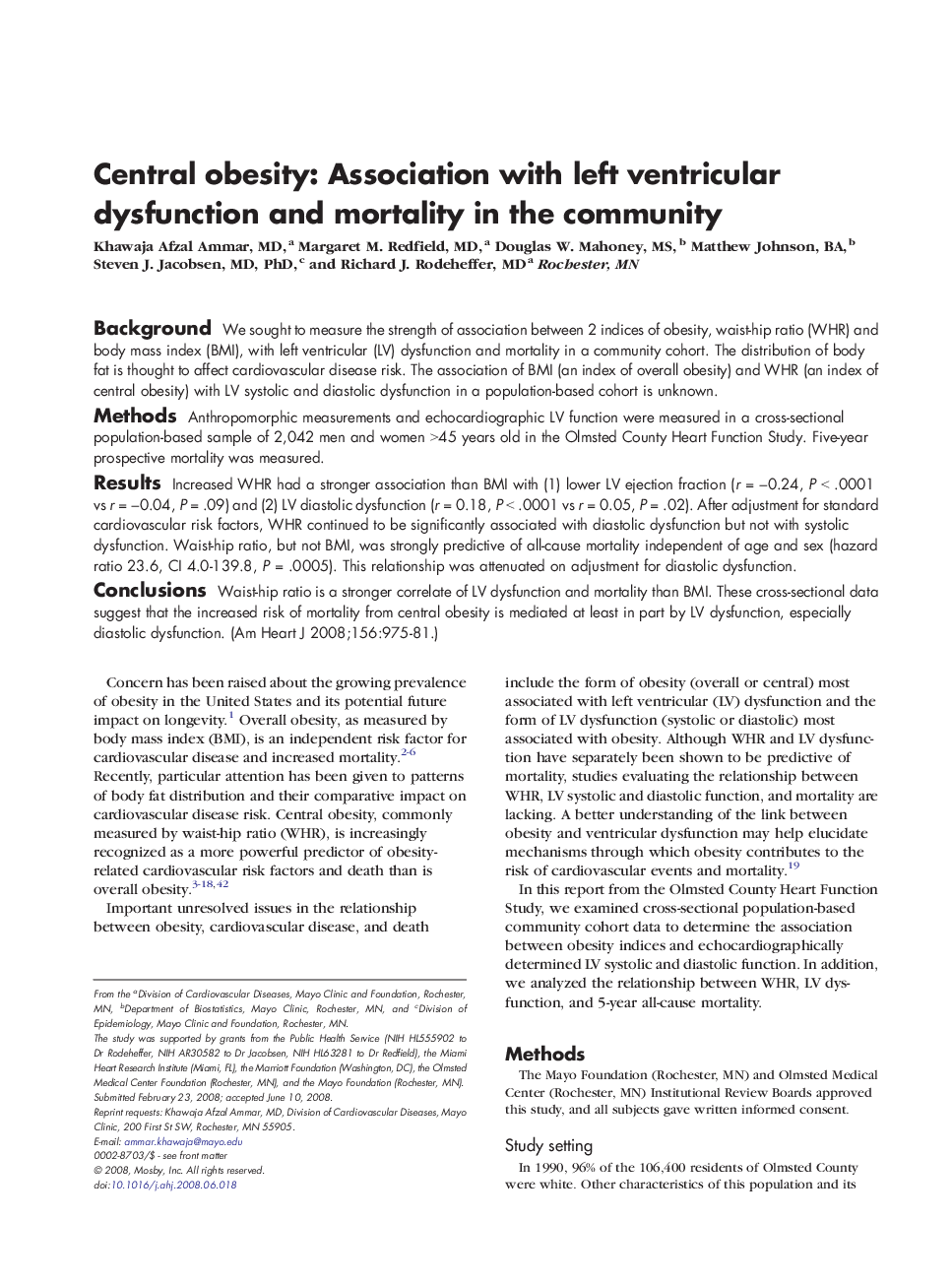| Article ID | Journal | Published Year | Pages | File Type |
|---|---|---|---|---|
| 2850708 | American Heart Journal | 2008 | 7 Pages |
BackgroundWe sought to measure the strength of association between 2 indices of obesity, waist-hip ratio (WHR) and body mass index (BMI), with left ventricular (LV) dysfunction and mortality in a community cohort. The distribution of body fat is thought to affect cardiovascular disease risk. The association of BMI (an index of overall obesity) and WHR (an index of central obesity) with LV systolic and diastolic dysfunction in a population-based cohort is unknown.MethodsAnthropomorphic measurements and echocardiographic LV function were measured in a cross-sectional population-based sample of 2,042 men and women >45 years old in the Olmsted County Heart Function Study. Five-year prospective mortality was measured.ResultsIncreased WHR had a stronger association than BMI with (1) lower LV ejection fraction (r = −0.24, P < .0001 vs r = −0.04, P = .09) and (2) LV diastolic dysfunction (r = 0.18, P < .0001 vs r = 0.05, P = .02). After adjustment for standard cardiovascular risk factors, WHR continued to be significantly associated with diastolic dysfunction but not with systolic dysfunction. Waist-hip ratio, but not BMI, was strongly predictive of all-cause mortality independent of age and sex (hazard ratio 23.6, CI 4.0-139.8, P = .0005). This relationship was attenuated on adjustment for diastolic dysfunction.ConclusionsWaist-hip ratio is a stronger correlate of LV dysfunction and mortality than BMI. These cross-sectional data suggest that the increased risk of mortality from central obesity is mediated at least in part by LV dysfunction, especially diastolic dysfunction.
